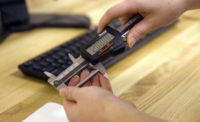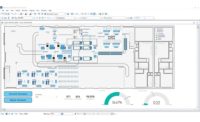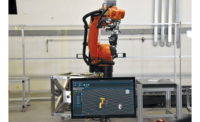Optimizing Machine Performance with Industry 4.0 and Calibration
Combining the latest in manufacturing technology with concepts that have been around for decades ensure quality products while minimizing unexpected shutdowns.

There’s an old saying that a chain is only as strong as its weakest link. Throughout the years, that expression has been adapted to fit different situations, including a “team is only as strong as its weakest player” or “your brand is only as strong as your weakest link.” In manufacturing, that weakest link is the machine that suddenly stops working or stops working properly, causing faulty products, delays in production and increased costs to fix the problem. The best way to avoid these problems is to ensure the machine is working optimally.
Predictive maintenance of machines proactively identifies potential issues which allows companies to deploy their maintenance services more effectively and improve equipment up-time. The critical features that help to predict the faults or failures of a machine are the year it was made, the make, the model and warranty details as well as unstructured data such as maintenance history and repair logs.
But there are limitations as to what can be discovered with that information, and that’s where Industry 4.0 can be beneficial. Systems using Industry 4.0 concepts have the benefit of a multitude of sensors connected to the internet that enable communication to the user. Using artificial intelligence to spot potential problems, the information gained from the equipment sensors can be turned into meaningful and actionable insights for proactive maintenance of assets, thereby preventing incidents that result in asset downtime or accidents. This is ideal from a production standpoint in the sense that there doesn’t have to be a total shutdown in order to know that a machine needs fixing. Maintenance can instead be scheduled at an opportune time. This also helps to ensure that the machines are operating at optimal levels.
Another benefit is that the user can be located anywhere and, with the benefit of an internet connection, get status reports about the machine. These status reports can contain information about the machine itself, such as operating temperatures and vibration levels, and they can help identify patterns.
Going hand-in-hand with predictive maintenance is machine calibration. Comparing the results of regular testing can help identify potential problems before they occur. Having a machine’s detailed characteristics regarding how its positioning performance is varying over time lets the user know that it is up to the job before cutting, processing material or measuring components has even begun.
The importance of having a properly calibrated machine can’t be understated. For one, ISO 9000 quality standards require manufacturing and inspection equipment to be calibrated, monitored and controlled using recognized and traceable systems and methods. Even if that’s not a concern because a company’s operations aren’t ISO 9000 certified, the premise behind ISO standards applies: assuring customers that products will meet their specifications. Being able to provide calibration graphs and regular performance evaluation results of machines shows that the proof is in the pudding. These can offer a competitive advantage over other manufacturers as well as go a long way toward customer reassurance.
Laser interferometry and ballbar testing are ways of achieving proper machine calibration. Interferometry is a measurement method using the phenomenon of interference of waves (usually light, radio or sound waves). The measurements may include those of certain characteristics of the waves themselves and the materials that the waves interact with. In addition, interferometry is used to describe the techniques that use light waves for the study of changes in displacement. This displacement-measuring interferometry is used for calibration and mechanical stage motion control in precision machining.
By using two light beams (usually by splitting one beam into two), an interference pattern can be formed when these two beams superpose. Because the wavelength of the visible light is very short, small changes in the differences in the optical paths (distance traveled) between the two beams can be detected (as these differences will produce noticeable changes in the interference pattern). Optical interferometry has been a measurement technique for more than a hundred years, and its accuracy has later been improved with the invention of lasers.
The concept behind ballbar testing is measuring a CNC machine’s accuracy by taking a path traced out by the machine and comparing it to the programmed path. In theory, if a CNC machine was programmed to trace a circular path and the positioning performance of the machine was perfect, then the actual circle would exactly match the programmed circle. However, many factors in the machine geometry, control system and wear can cause the radius of that test circle and its shape to deviate from the programmed circle. So, comparing the programmed path to the actual pass offers a measure of the machine’s accuracy.
Integrating Industry 4.0 technology into your process may seem like a costly investment at first, but it pays off by keeping your machines running optimally and minimizing costly shutdowns. And while that’s a much newer concept, practices that have been around for decades, including one that’s been around for a century, to properly calibrate machines should be a regular part of your maintenance routine to ensure products meet clients’ specs. Together, these two concepts will reassure your customers as to the quality and reliability of both the product and your ability to produce the order on schedule—while letting you say goodbye to your weakest link.
Looking for a reprint of this article?
From high-res PDFs to custom plaques, order your copy today!






